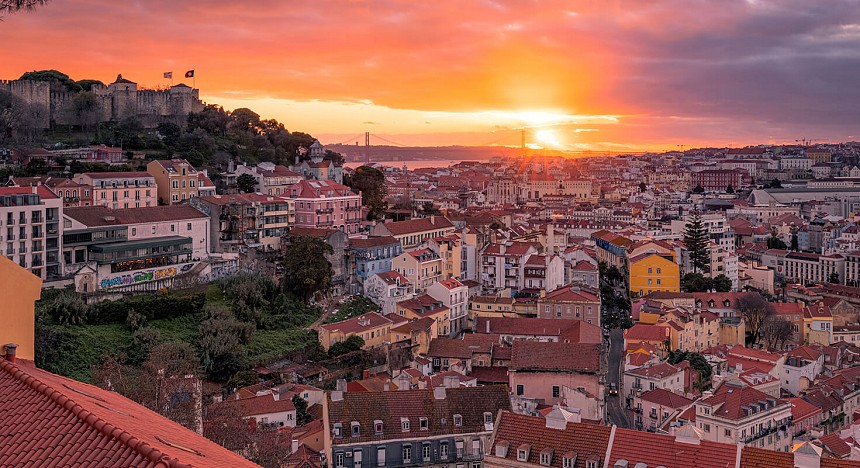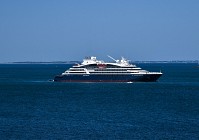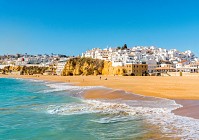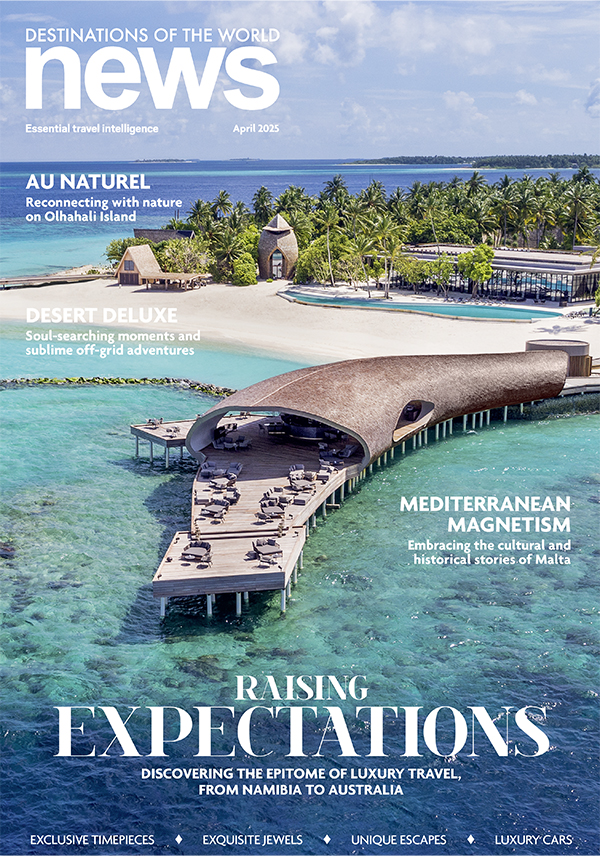DAY 1
12.30 - Check into the Palacio Principe Real, a hotel recently opened by British couple Gail and Miles, long-time expats turned passionate hoteliers. The pair spent years restoring this stunning mansion back to its former glory, and now happily potter around gardening and chatting to guests. You’ll be served a welcome pot of mint tea in the peaceful, high-walled garden beside the Bali-esque raised pool. Every room is different, some with intricately carved Moorish ceilings and enormous tin freestanding bathtubs. Staff refer to it as their ‘little oasis’ in the bustling Principe Real, and you’ll feel glad to retreat here after a busy day out.
1pm As a coastal city, one of Lisbon’s best things is that at any given moment in the city centre you are about 25 minutes’ drive away from a beach.


There can be no better way to acclimatise to life in the Mediterranean than immediately going for lunch on the seafront. Hop straight in a taxi to Casa Reia, a luxurious, bohemian beach club which sits right on the sands in Costa da Caparica. Try the zucchini baba ghanoush with mint and raspberries, and the seafood rice, chockful of fresh shrimp and squid, as you take in vistas of the sea, before retiring to a sun lounger with a cocktail.


15.30 - As the hottest part of the day begins to recede, head back to the city centre for a spot of shopping. Lisbon is famed for its ceramics, or azulejos, although most of the traditionally-made wares are actually produced slightly north of the city in Portugal’s pottery heartland of Caldas da Rainha. Given you can find replicas and tourist tat everywhere, it’s difficult to know where to buy your souvenirs. A good bet is A Vida Portugesa, sourcing traditionally crafted ceramics, linen and more.

16.00 - Down the street on Rua Serpa Pinto is the National Museum of Contemporary Art. Lisbon is such a visual city, a place of patterns, prints and motifs, so a visit is a great way to get your footing in the world of Portuguese arts and design and place the city in an aesthetic context.

The National Museum of Contemporary Art is a great way to get your footing in the world of Portuguese arts.

17.00 - A mid-afternoon gin and tonic? Why not, you’re on holiday. Barrai Alto is a slightly terrifying prospect at night, heaving with hordes of buzzing tourists and students. It’s worth wandering through the criss-cross streets a bit earlier and stopping by Ginjinha das Gáveas, a tiny hole-in-the-wall gin bar close to the metro station. Rightly proud of Portugal’s gins, the barmen will be eager for you to try different options while you settle on your favourite, before demonstrating their meticulous crafting process, using tweezers to add an exact number of juniper berries.
18.00 - Before you stop by the hotel to freshen up, have a breather in the charming Praça de Flores, a shaded fountain square surrounded by chic bars and restaurants. Grab a takeaway coffee from the kiosk and sit on the edge of the fountain in a patch of sun or on one of the surrounding benches to take in the relaxed atmosphere.

19.00 - Return to the hotel to get ready for your evening out. We advise making time for a quick soak in the impossibly deep tubs. Then it’s time for a pre-dinner aperitif at Oyster + Margarita, just a few minutes’ walk from the hotel. It’s all in the name, although there are some other things on the menu should neither of life’s most delicious riches appeal (no judgment). It’s the perfect spot for a bit of Instagram bragging about your glamorous holiday and a spot of people-watching of Lisbon’s increasingly glitzy crowd.

19.30 - Amble down to the Rua do Loreto and catch the funicular to dinner. The journey takes about five minutes – you could, of course, simply walk, but that wouldn’t be nearly as fun. The classic tram is a national monument covered in graffiti and will take you down to dinner on Rua do Boavista.

20.00 - Tricky’s is the name on every Lisbon hipster’s lips right now. Enter through a doorway hung with yellow PVC strip curtains and discover a lively industrial space with loud music and fun, easy-going staff. From octopus tacos to jackfruit and oyster mushroom kebab, there are about 10 plates on the menu to choose from, and a great selection of natural wines too (something Lisbon is becoming synonymous with). Get a seat at the kitchen bar, and you can watch the chefs prepare everything, and you’ll have the dish presented and explained to you. Your evening might not be over by the time you get to the bill – the night often turns to dancing by the bar. (Be aware: it’s cash or Portuguese cards only.)

DAY 2
10.30 - After a breakfast of fresh fruit and eggs in the hotel garden, wander over to the Botanic Garden – just a few minutes’ walk away.
Barely visible from the surrounding streets, there’s just one entrance on Rua da Escola Politécnica: home to 10,000 plants, it’s undoubtedly the most peaceful spot in the centre of the city (as long as there are no pesky school groups raising hell inside, anyway).
The Botanic Garden is home to 10,000 plants. It’s barely visible from the street and is undoubtedly the most peaceful spot in the city.

11.30 - Minimalist dressing be damned – Lisbon is the place to wear a loud shirt. Just outside the garden on Rua da Alegria is Otherwise, where you’ll find jolly handmade prints that uses the Ikat weaving technique and fabrics imported from India. Alternatively, you could pick something up in the market in the Jardim de Principe Real over the road.

12.00 - If you’re a first-time visitor to the city – and in fact even if you’re not, as it’s right next door – it would be remiss not to stop by the urban viewpoint Miradouro da Graça. Snap your city shot from São Jorge castle all the way up to the river, including Mouraria and downtown Baixa Pombalina. Top tip: a wildly talented Spanish guitar player named Leon is often positioned here on sunny afternoons and is well worth taking a moment to listen to.


13.00 - Lisbon is a city that has seen a huge amount of change over the past decade, be it hospitality or ultra-modern gastronomic concepts like Tricky’s. As an antidote to last night’s supper, eating some traditional Portuguese food is a must. Head to Pica-Pau a genuine ‘grandma-style’ Portuguese lunch elevated with flair. Head chef Luís Gaspar has created ‘everyday food that takes us back to our childhoods’, from the likes of pastéis de bacalhau (cod cakes) to rissóis de leitão (meat patties).

14.00 - Time to move over to the far west of the city, the neighbourhood of Alcântara, to see a more modern side of Lisbon. The LX Factory is an industrial complex from the 19th-century that is now the home of a number of independent shops, vegan cafés, bars and co-working spaces. It’s no surprise that it’s a mecca for the city’s ever-expansive digital nomad community, and an interesting step change from the historic centre.

15.00 - Just a few minutes’ taxi drive away is Parque Florestal de Monsanto, a sprawling forest and Lisbon’s largest park. This verdant eucalyptus woodland seems an incongruous place to find the Panorâmico de Monsanto, an abandoned restaurant-turned-incredible urban art destination. The brainchild of famous Portuguese architect Francisco Keil do Amaral, it opened as a five-floor restaurant in 1968 to much fanfare, serving as another miradouro with fabulous vistas of the whole city. Today it is a concrete shell filled with street art, from ceramic panels and a vast, modern stained-glass piece in the stairwell.

18.00 - Take a taxi back to the hotel, change into something comfortable, and gather yourself for a big evening ahead. On the way to dinner, ask your taxi driver to stop off at the fascinating Fábrica Braço de Prata. It couldn’t be further from its origins as an ammunition depot and arms repair facility; now a ‘cultural factory’ and creative space for alternative artists, featuring exhibition rooms, a bookstore, shops, cinema, theatre, café, and all sorts of creative happenings humming in the background. Parties are even held in an old weapons bunker!

19.30 - Your final Lisbon denouement is in the Beato neighbourhood, where you’ll have a dinner experience to talk about for years to come. The Palacio de Grilo, also known as the Palace of the Dukes of Lafões, is a 350-year-old building that was purchased last year by a Parisian theatre director Julien Labrousse. Upon exploring the property, the director claims to have found an old notebook written by the former owner, a Duke who wanted the palace to be ‘a place that is also not a place and that can allow the soul to take the flight that best suits it’. Labrousse took him at his word, creating an immersive theatre dinner experience set across 200 rooms, where anything might happen. Actors made up in colourful face paint maraud through the space, making shadow puppets on the walls, blowing giant bubbles and eating kitchen roll. Food isn’t anything out of the ordinary, but this is all about the extraordinary setting. Have an aperitif in the beautiful garden and watch the sunset. After dinner, dance the night away with the grit and glamour of Lisbon in the club next door.











